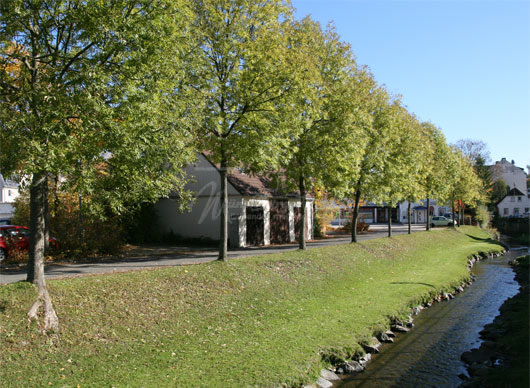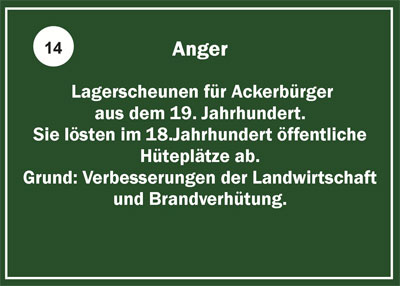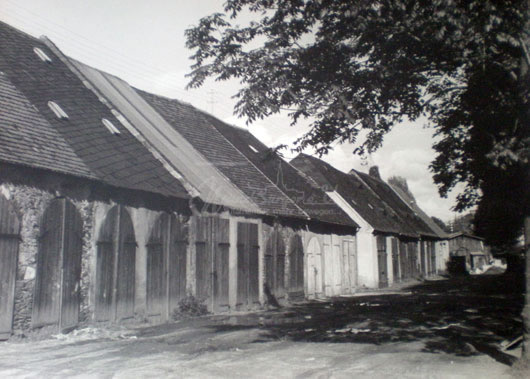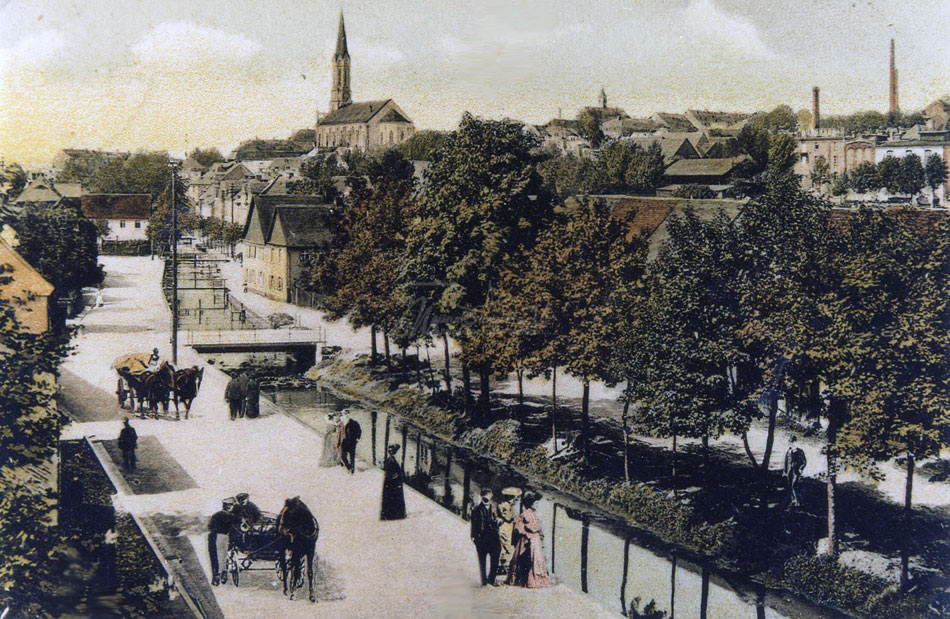
Meadows


Building Number 14 in the printed brochure
"Historic Buildings in Münchberg".
The sign is on the lamppost to the right of the building.
 Here on the Meadows stood barns of the farmers for storing from the 19th century. At that time the tradesmen were still farming. Originally the wooden structures stood next to the dwellings in the city. Because of repeated city fires, however, they were later erected outside, like here on the river Pulschnitz. Also, the farmers could more easily enlarge their premises with that and were nearer to their fields. At one time, long rows of barns stood here, but today only the remains exist. Until the 18th century the camps stood in this region. Earlier pastures were called "Hutanger" (held meadow) on which were the community cattle.
Here on the Meadows stood barns of the farmers for storing from the 19th century. At that time the tradesmen were still farming. Originally the wooden structures stood next to the dwellings in the city. Because of repeated city fires, however, they were later erected outside, like here on the river Pulschnitz. Also, the farmers could more easily enlarge their premises with that and were nearer to their fields. At one time, long rows of barns stood here, but today only the remains exist. Until the 18th century the camps stood in this region. Earlier pastures were called "Hutanger" (held meadow) on which were the community cattle.
Around 400 meters down the river the Angermühle (meadow mill) was built in 1730 as the last mill in the Münchberg urban area, slightly in front of the present day recycling center, where now a multi-family house stands.
Not far away, between Mühlgasse and Ottostraße the oldest city mill, which was also called the "Kastenmühle" and later the "Untere Mühle" lower mill, was erected before 1400. This had water provided by a trench.
Both of the other mills are on Kulmbacher Straße. The "Bechersmühle" stood outside the city by the Schoedels factory and above the fire department the "Obere Mühle" (upper mill) was torn down 1971 as the last of the four Münchberg mills.
Further information about the mills can be found in volume two of the city history “Mills in Münchberg and in the old Münchberg District”.

Video: Aerial view Meadows
Copywriters, authors, photographers, rights holders or sources:
Rainer Fritsch, Sandy Schroeder, Markus Jennermann, Wilfried Kluge, city archives